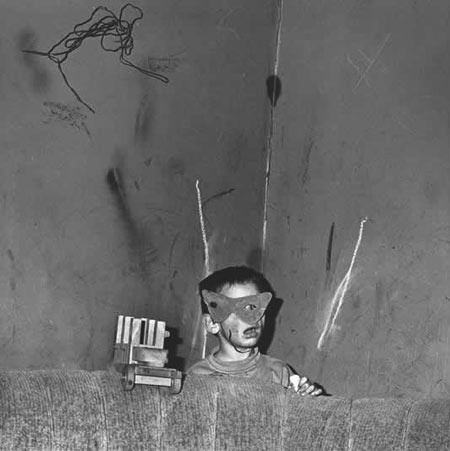Is b/w dead? Obviously not!

I keep hearing and reading people asserting that somehow, colour photography has completely overwhelmed b/w photography and that b/w is “dead” or that it is time for b/w to “come back”. Is b/w really dead? If anything - to paraphrase Frank Zappa - it might smell a bit funny. But joking aside, I simply don’t see any evidence that b/w is dead. Of course, we do see way more colour photography now than, say, thirty or twenty years ago - but what does that prove?
There are regular comments that I don’t like b/w - which is simply not true. As I said many times on this blog, for me the medium is not the message, so I don’t care whether it’s b/w or colour photography, as long as it’s at least interesting. Of course, you could now claim that my idea of “interesting” is way different from everybody else’s, and I don’t think that’s true.
Take, for example, the photographers represented by Gagosian gallery, probably the most influential and certainly the most prestigious art gallery today. If I’m not missing someone, four of those photographers - Vera Lutter, Sally Mann, Roger Ballen, and Hiroshi Sugimoto - shoot in b/w, and each recently had or will have (this coming season) major shows, or are having one right now. If my counting isn’t off (always a possibility), there are five other photographers represented by Gagosian who shoot in colour - four out of nine, that doesn’t look like a dead medium to me. And two out of those four (Ballen and Mann) are amongst my favourite photographers, which also doesn’t support the idea that I’m biased against b/w, does it?
Or take Bernd and Hilla Becher, arguably the most influential German contemporary photographers. Their work is b/w.
Or take Beate Gütschow, part of whose work is b/w (digitally composed!).
You could easily add many more artists to this list, artists who work in b/w and who had major exhibitions and/or books recently. The idea that b/w is dead doesn’t hold any water. And if I may add that if you look at just the photographers I mentioned so far, most of them really pushed the boundaries. Instead of repeating or mimicking older work, they created something new, something unique, something that shows a very creative mind at work (of course, the same can and should be said for the colour Gagosian photographers, for example).
I know people will get angry at me for saying this, but if you take photographs that are just a repeat of Walker Evans’ work (you can replace Walker Evans with any other famous classic photographer) then why would that be so interesting? Why wouldn’t we simply look at the originals instead? If your work references Walker Evans, but adds your own personal twist, now that’s where it’s getting interesting (as before, this kind of reasoning is equally true for colour work).
We now are in a situation where both b/w and colour are equally accepted ways to take photographs, and it’s up to the photographers to make out of that whatever they want. In the end, what matters is not whether it’s shot in colour or b/w, what matters are the photographs. Great b/w photographs will make it easily into art galleries or books, and those photographers will easily find even the most prestigious representation.
So let’s stop talking about how b/w is dead or how it is supposed to come back. It was never gone - just look at all the wonderful and successful b/w work we’ve seen over the past twenty years alone!